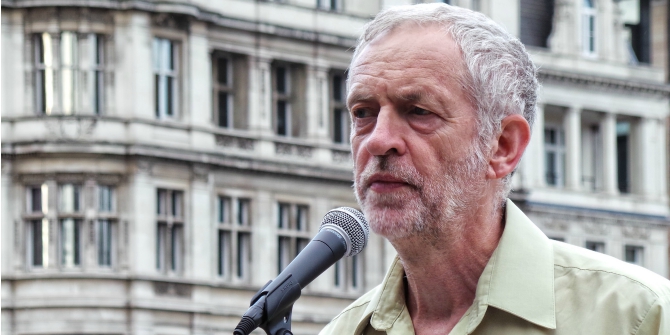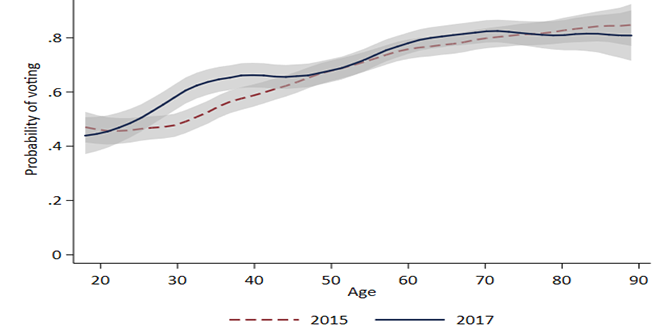The Scottish National Party has a new leader and Scotland has a new First Minister, putting an end to the speculation around who might be Nicola Sturgeon’s successor following her abrupt departure. Yet the uncertainty around Scotland’s future in the UK looks set to continue. Lynn Bennie, Malcolm Harvey and Judith Sijstermans identify some of the main challenges Humza Yousaf will now have to face.
The election of Scotland’s first Muslim and first minority ethnic First Minister combined with a combative leadership campaign has brought attention to Scottish politics once more. Yet, to the outside observer, the narrative around what’s next may seem muddled. The SNP faces internal battles stemming from a hard-fought leadership contest and ongoing organisational issues. Scotland’s political landscape seems stagnant, as it nears the 25th anniversary of devolution. Scotland’s relationship with the UK is mired in disagreement, leaving its role in the union and world in a constant state of transition.
The SNP as a mass-membership organisation – Don’t believe the hype
The same day a former leader of UK Labour accused its current leader of undermining internal party democracy, another party announced the results of a five-week long internal democratic exercise. 50,000 members of the SNP participated in a process which ultimately elected Humza Yousaf as the party’s new leader and Scotland’s next First Minister.
These events have significance for our understanding of the SNP as a membership-based organisation. Following the 2014 independence referendum, SNP membership rocketed to more than 120,000, from a base of 25,000, an extraordinary success. For a time, the SNP had the second largest membership of any UK party. There were even suggestions that the SNP had become a modern mass-membership organisation akin to Duverger’s (1954) classic mass party model, suggesting a high degree of participation and power on the part of members and activists.
The 2023 leadership contest did much to bust this myth. The SNP under Sturgeon was a powerful election-winning machine, and that machine benefited from an increased number of activists following the 2014 membership surge. However, research has shown that the average post-surge SNP member was not very active. In practice the party’s masses were docile and trusting of the leadership. The recent leadership contest revealed that the SNP leadership had concentrated power to such an extent that all candidates appeared obliged to commit to wholesale internal party reform.
For much of the post-2014 period, the SNP was open about membership numbers, using these to project an image of success. From the end of 2021, however, the party fell silent on the matter. Until, that is, its hand was forced during the 2023 leadership election and the party revealed that there were “only” 72,000 members. This is a sizeable number but the SNP’s attempt to control the narrative backfired as opponents portrayed this as dramatic decline.
In the end, 70 per cent of members voted for a new leader (96 per cent online and 4 per cent by post). We might have expected a higher level of engagement in such an important contest, which was determining both party leader and First Minister of Scotland. However, large numbers of members do nothing beyond joining their parties and turnout levels in party leader contests vary wildly. More than 80 per cent of members voted in the ill-fated Conservative leader contest in 2022 but only 57 per cent participated in the most recent vote for UK Liberal Democrat leader. Scottish Green members (who experienced their own post-referendum surge) are regularly asked to vote for (two) party leaders but fewer than half do so. The SNP, and modern parties more generally, are more top-down than “mass” in character.
What does this mean for the Scottish political landscape?
By a narrow margin, continuity trumped change; progressive politics remains the preferred ambition of SNP members. The government deal with the Scottish Greens remains intact. The UK government’s Section 35 Order on Gender Recognition Reform looks set to be challenged. Plus ça change, plus c’est la même chose?
For Scottish parties and party competition, little seems likely to change. Humza Yousaf’s mantle as the continuity candidate means the SNP’s overall strategy won’t change – and as a result, neither will opposition parties alter their approach. Douglas Ross and the Scottish Conservatives have found a rich vein of success in positioning themselves as the dominant unionist party. If Yousaf continues to pursue independence as vigorously as indicated in the leadership election, expect the Conservatives to continue with this strategy.
Humza Yousaf’s mantle as the continuity candidate means the SNP’s overall strategy won’t change – and as a result, neither will opposition parties alter their approach.
Scottish Labour under Anas Sarwar have recovered from disastrous elections in 2015/6 and will continue to press the SNP on their social democratic agenda – with one eye on making gains in the next UK General Election – although this might have been easier if more conservative Kate Forbes had become First Minister. Alex Cole-Hamilton’s Scottish Liberal Democrats, with only 4 MSPs, are still trying to repair the damage from their period in UK government between 2010 and 2015, and Yousaf’s election will likely impact them the least.
The most important party impact, beyond the SNP itself, is likely to be on the Greens. The prospect of Kate Forbes or Ash Regan winning the leadership contest had let to considerable disquiet in the party over the continuation of their governing agreement. And had either emerged victorious, the dissolution of the agreement and the parliamentary arithmetic would have led to significant uncertainty. Yousaf’s victory avoids that outcome, maintains that parliamentary majority for the government, and ensures an element of stability in the party system. On that front at least, the incoming First Minister can at least breathe a little more easily.
What does this mean for the case for Scottish independence?
For the last 16 years, SNP First Ministers have long made their case for sovereignty internally – for example, negotiating with the UK government for powers over a referendum and, externally, through outreach to international partners like Ireland and multilateral forums like the EU. Creating a new country requires this dual role. Sovereignty internally and acceptance internationally are two sides of the same coin.
Internally, the Scottish independence process seems set for more of the same – unlikely to be significantly moved forward by a series of what Yousaf called ”regional assemblies”. Yousaf expressed a need to move past the “quagmire of process” but his efforts to move forward will likely be stymied by the UK government’s rejection of a negotiated process and Supreme Court’s confirmation that the Scottish Parliament cannot hold a referendum without Westminster’s approval. In a situation that will be familiar to secessionists across the world, including Catalans, the UK government benefits from the stagnancy of the situation.
Externally, Yousaf may have more opportunities. In the past, First Ministers have stretched the nature of the role to develop what scholars call para-diplomacy, the diplomacy of sub-state regions that runs parallel to (and sometimes in competition with) the diplomacy of the state. This may have been most visible in Nicola Sturgeon’s post-Brexit diplomatic travel, when she was welcomed to Brussels in contrast to the situation of British diplomats. However, Sturgeon’s post-Brexit diplomacy did not make a lasting impression. She turned north, for example opening a Nordic Hub in Copenhagen or hosting the Arctic Circle Forum in Edinburgh. Her “wellbeing economy” approach characterised these engagements, but she did not centre the international search for independence as First Minister.
In his acceptance speech, Yousaf indicated his interest in the international, citing his family’s move “from the Punjab to our Parliament” and emphasising his identity as a “proud European”. His migrant background, Muslim faith, and commitment to the European Union may form the basis of his engagement with the international arena. However, this will require him to move past his “continuity” position to rejuvenate the role of Scotland’s First Minister abroad after disruptions from COVID-19 and Sturgeon’s quieter approach.
All articles posted on this blog give the views of the author(s), and not the position of LSE British Politics and Policy, nor of the London School of Economics and Political Science.
Image credit: Scottish Government, Attribution 2.0 Generic (CC BY 2.0)






